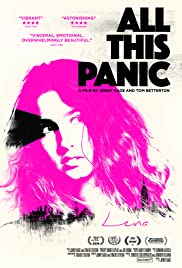
In 1975 French Oscar-winning documentary filmmaker Pierre Dominique Gaisseau traveled to Panama to make a film on the indigenous island-dwelling Kuna people. Accompanied by his wife and their daughter, Gaisseau lived with the Kuna for a year, gaining their trust and filming their most intimate ceremonies. He promised to share the resulting film with the community, but that never happened. Fifty years later, the Kunas are still waiting to discover “their” film, now a legend passed down from the elders to the new generation. One day, a hidden copy is found in Paris…While uncovering this fascinating story with humility and warmth, Swiss-Panamanian filmmaker Andrés Peyrot succeeds in capturing a true sense of culture and place. The result is simultaneously a cautionary tale raising questions around how and why documentaries are made and for whom, and a testament to the power of what it means to see yourself on the big screen.
You May Also Like

When “The Electric Company” made its television debut in October 1971, it was instantly clear that it would fulfill its mission of helping struggling and reluctant readers. With a ground-breaking and diverse cast, clever writing, innovative direction, and an original visual and musical style, the show was so effective that by the end of its first season, nearly a quarter of all US schools were using the show in the classroom. Generations of young people learned to read from the series, making it one of the most important and enduring shows in American television history. “The Electric Company’s Greatest Hits and Bits” is a clip-filled celebration featuring many of the series’ most popular segments (with Bill Cosby, Morgan Freeman, Rita Moreno and the rest of the multi-talented Electric Company cast), and includes new interviews with cast members Jim Boyd, Judy Graubart, Skip Hinnant, Tom Lehrer, Rita Moreno, and Joan Rivers, as well as with series creator Joan Ganz Cooney.

Not Available


Wiz’s Weekender (1992) was a film ahead of its time, both in form and content. It engaged with contemporary issues that mainstream media were eager to sensationalise. Consequently, it was branded with an 18 certificate and banned by both the BBC and ITV, never reaching a wider audience. For the past three decades, Weekender has bubbled just below the surface, gaining genuine cult status and influencing a vast network of creators. In the run-up to its thirtieth anniversary filmmakers Tabitha Denholm and Adam Dunlop interviewed people involved in the project. I Am Weekender is built around those conversations.

This documentary offers an honest look at our fraught, complex relationship to video games from the perspectives of gamers and their concerned parents.

Darren Maxwell became addicted to collecting Batman merchandise in late 1980s Australia as a way to be a part of nascent geek culture. Decades later, Darren’s stuck with a room full of collectables – a membership card to a fandom he no longer recognises – yet powerful forces beyond his control mean he’s unable to let go.

Shot over a three-year period with unparalleled intimacy and access, ALL THIS PANIC is a feature length documentary that takes an intimate look at the interior lives of a group of teenage girls as they come of age in Brooklyn. A potent mix of vivid portraiture and vérité, we follow the girls as they navigate the ephemeral and fleeting transition between childhood and adulthood.

For the first time in more than 3 decades, this reclusive artist lets a camera into his life in this amazin opportunity to meet the mysterious man behind the guitar. Ina series of candid interviews, Cale describes his childhood and his wild years in psychedelic California. Cale also shares his insights about his influences, songwriting, success, life on the stage and on the road – all interlaced with outstanding live performances, archival footage, interviews with band members and friends, and awe-inspiring images of American landscapes. Eric Clapton appears in some performance footage. While credited with such hits as “After Midnight,” “Same Old Blues,” and “Cocaine,” Tulsa-pioneer J.J. Cale has never been one to accept the limelight. Hiding from the press, Cale emerges here for the first time in three decades for an extensive documentary filled with music and revealing interview material.

More of a film essay – of the type pioneered by Orson Welles and Chris Marker – than a standard documentary, German filmmaker Lutz Dammbeck’s The Net: The Unabomber, the LSD and the Internet begins with the typical format and structure of a nonfiction film, and a single subject (the life and times of mail bomber Ted Kaczynski). From that thematic springboard, Dammbeck branches out omnidirectionally, segueing into a series of thematic riffs and variants on such marginally-related subjects as: the history of cyberspace, terrorism, utopian ideals, LSD, the Central Intelligence Agency, and Cuckoo’s Nest author Ken Kesey and his Merry Pranksters.

The No. 6 People’s hospital is one of the largest hospital in Shanghai. Through a range of crossed stories, of weakened lives, this is a portrait of China today that stands out.

A journey alongside the filmmakers behind Disneynature’s Polar Bear (2022) as they face profound challenges 300 miles from the North Pole to film one of the planet’s most intriguing creatures.